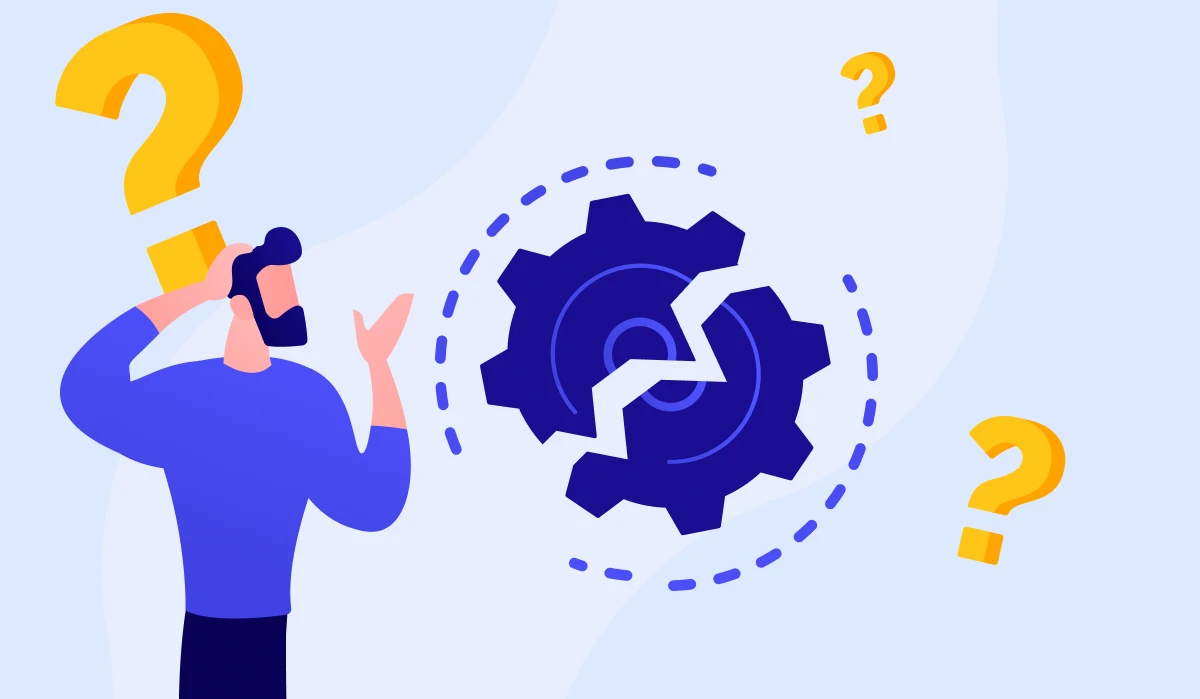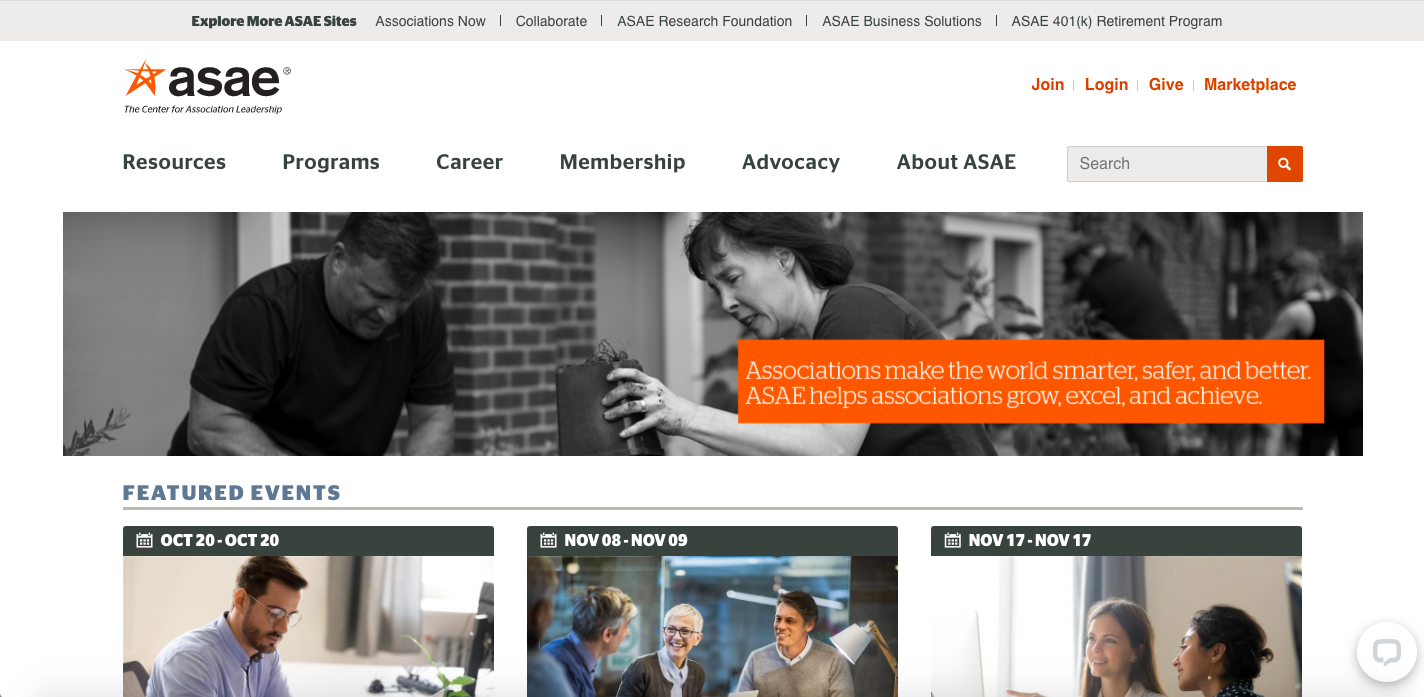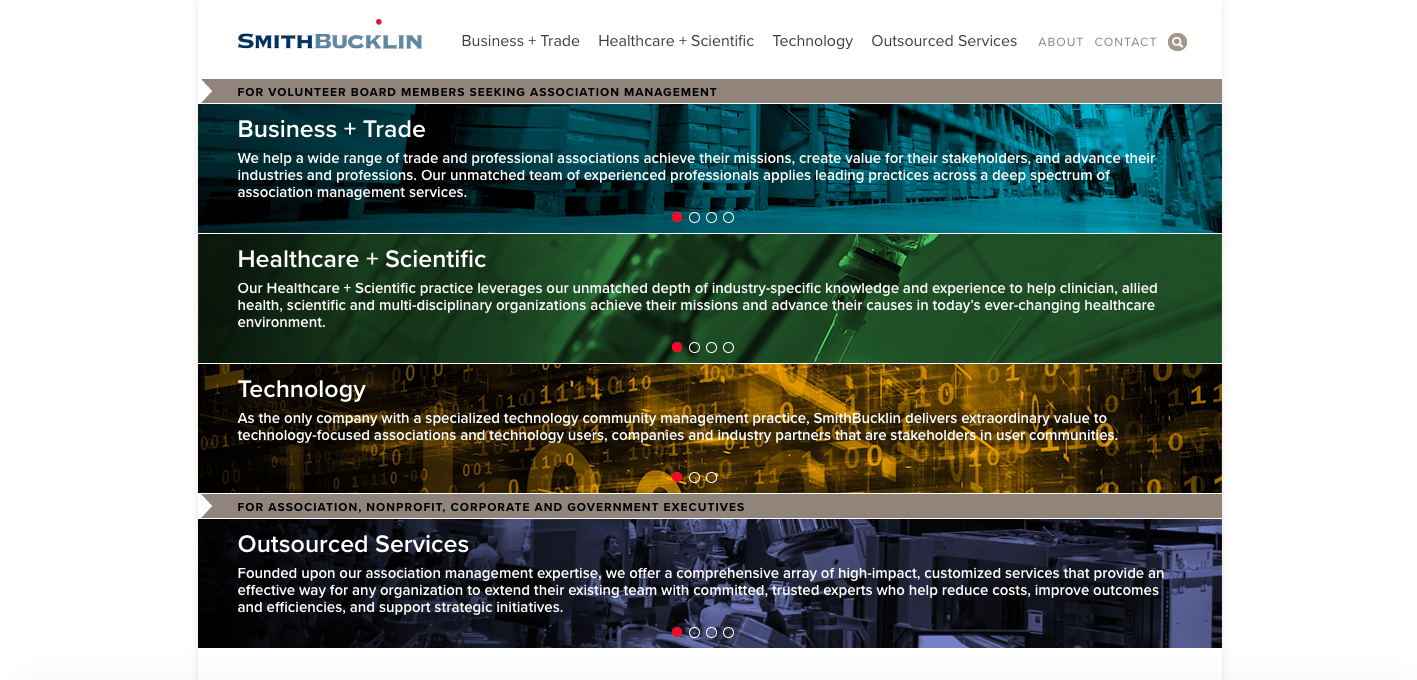
Last Updated: June 07, 2024
Associations provide different benefits and opportunities as they continuously adapt to a changing business environment. But if there is one thing they share in common, it is the ability to offer a wide range of opportunities to others, which enables business success and builds meaningful relationships.
Are you interested to know how to start an association but still feel unprepared? Read on to learn the basic steps of forming it, understand its advantages, and gain in-depth knowledge of the differences between a corporation and incorporation.
Key Takeaways
- Associations are groups of individuals with a shared purpose, combining their skills and knowledge to achieve common goals for the greater good. They typically follow a set of rules and membership requirements.
- It's crucial to understand the distinction between a corporation and incorporation. While a corporation is an authority formed to run an organization, incorporation is the legal process of registering an organization as a corporation, offering limited liability protection.
- Starting an association can be a meaningful endeavor, offering benefits such as flexibility in registration, ease of implementing rules, tax-exempt status, and access to financing.
- The process of starting an association involves strategic planning, board development, fundraising, incorporation, tax exemption, and compliance with legal requirements.
- Establishing a strong sense of purpose, creating well-defined rules and regulations, and incorporating effective governance structures are crucial elements for the success of an association.
What Is an Association?
An association is any group of individuals who share the same purpose. They combine their skills and knowledge to commit and attain all their goals for the common good. In addition, an association typically follows a set of rules and membership requirements.
Goals for Your Association
When you intend to start an association, one mandatory element is a common need. There should be a shared need among many like you, allowing you to unite and form an association dedicated to addressing that need and achieving a common goal.
For example, suppose there is a growing number of freelance graphic designers in your city who feel isolated and lack professional development opportunities. This common need for community and growth could be the foundation for starting an association.
If this shared need exists, it's a clear sign that starting an association is necessary. If not, you might reconsider your plans.
Once the need is established, it’s vital to outline the association's goals. The goals could include advocating for a particular cause, providing support and resources to members, developing professional networking, or promoting industry standards.
Clearly defined goals will guide the association’s activities and help in rallying support from potential members.
Why Do So Many Associations Fail?

Many associations fail due to a combination of internal and external factors. Here are some key reasons:
Lack of Clear Vision and Goals
Without a clear vision and specific goals, associations struggle to stay focused and motivated.
Poor Financial Management
Inadequate budget planning can lead to resource shortages and financial instability.
Insufficient Member Engagement
Failure to engage and retain members results in a lack of support and participation, weakening the association’s foundation.
More than half (53%) of associations admit they have trouble engaging young professionals, which can further hinder growth and sustainability.
Additionally, 1 in 3 (32%) of respondents say their organization has no process for measuring engagement, making it difficult to identify and address engagement issues.
Ineffective Leadership
Weak or unqualified leadership can result in poor decision-making and a lack of strategic direction.
Inadequate Communication
Poor communication within the association and with its members can lead to misunderstandings, low morale, and disengagement.
Resistance to Change
An inability to adapt to industry changes, technological advancements, and member needs can render an association obsolete.
To succeed, associations need to establish a clear vision, manage finances prudently, engage members effectively, ensure strong leadership, maintain effective communication, and be adaptable to change.
3 Types of Associations
Associations come in various forms, each serving different purposes and audiences. Understanding the different types of associations can help clarify their roles and how they benefit their members and society.
Here are three common types of associations:
1. Professional Associations
Professional associations are organizations that bring together individuals from the same profession to promote their collective interests. These associations typically focus on:
- Advocacy: Representing the profession’s interests in legislative and regulatory matters.
- Education: Offering continuing education opportunities, certifications, and professional development programs.
- Networking: Providing forums for members to connect, share knowledge, and collaborate.
Example: The American Medical Association (AMA) represents physicians and medical students, advocates for medical professionals, and offers various educational resources and networking opportunities.
2. Social Associations
Social associations are groups formed around shared interests, hobbies, or social causes. Their primary focus is on building a sense of community and providing social support. Key aspects include:
- Community Building: Creating a sense of belonging and camaraderie among members.
- Events and Activities: Organizing social events, recreational activities, and volunteer opportunities.
- Support Networks: Offering emotional and social support to members facing similar challenges or interests.
Example: The Sierra Club is an environmental organization that engages members in outdoor activities and advocacy for environmental protection, building a community around the shared interest of preserving nature.
3. Trade Associations
Trade associations are organizations that represent the interests of businesses within a specific industry. They aim to promote and protect the industry as a whole. Their main functions include:
- Industry Standards: Developing and promoting industry standards and best practices.
- Advocacy: Lobbying for favorable policies and regulations at the local, state, and national levels.
- Business Development: Providing resources, market research, and networking opportunities to help businesses grow and succeed.
Example: The National Association of Realtors (NAR) represents real estate professionals, advocates for industry-friendly policies, and provides tools, training, and resources to help realtors succeed.
Each type of association plays a unique role in supporting its members and advancing its specific goals, whether it’s professional development, social engagement, or industry advocacy.
What Are the Differences Between Association Corporation and Incorporation?
If you are a business leader or an entrepreneur, it is imperative that you understand the difference between a corporation and incorporation. The two terms are closely related, but they have some unique differences.
A corporation is a body or authority formed to run an organization. It gives organizations liabilities on personal assets, especially on debts or other financial obligations. As a legal office, they are required to pay taxes while operating or making money. This entity is also required to have a corporate charter—a set of documents for incorporation to be filed in the State Corporate Office.
On the other hand, incorporation is the legal steps taken to register an organization as a corporation. It enjoys limited liability for its obligations, as it protects personal assets from debts. Incorporation needs to have some basic documents, but the rules and regulations differ from country to country depending on the region’s jurisdiction.
Below are the benefits of incorporating an organization:
- The transfer of ownership interests are easier
- A corporation can go beyond that of the founders
- Significant credibility boost to partners and to other organizations
- An association has easy access to financing and grants
- Low tax rates
As an association leader, you may choose to either use Corp. or Inc. extensions. Once you’ve registered an association, the selected extension should be applied to all legal matters.
Business Associations vs. Nonprofit Associations
There are key differences between organizations that identify themselves as “business associations” and “nonprofit associations.”
A business association is member-focused, and its primary duty is to provide services and benefits to members of a trade group, professional association, etc.
Its board member nomination and election usually happens during a large event, wherein each association member can vote for a new set of board of directors and board members.
While some associations are not obliged to pay their taxes, a professional association cannot be exempt and should abide by the Internal Revenue Code (IRC) Tax Designation 501(c) 4 or 501(c) 6.
On the other hand, a nonprofit association is typically a charitable institution that focuses on a mission to serve those in need. For most nonprofits, the election of officers and members is exclusive to the board.
Most educational, religious, and other charitable nonprofit organizations, which all have a desire to serve and improve the well-being of others, are IRS tax-exempt.
The One Thing That Will Make Your Association a Success
Associations often face challenging times, encountering difficulties that may even lead some to shut down. However, what sets successful associations apart is their resilience.
Successful associations endure because of one crucial element: a strong sense of purpose. This purpose drives them to fulfill an unmet need within a community of like-minded individuals.
For example:
- Organizations dedicated to environmental conservation persist because of their commitment to protecting natural habitats.
- Similarly, support groups for individuals facing mental health challenges continue their work driven by the desire to provide a safe space for healing and connection.
It's this shared goal, this dedication to serving their community, that propels them forward in the face of adversity, ensuring their continued success and impact.
If you have this one thing, you will also endure and emerge stronger from any challenges you encounter on your journey.
Questions to Ask Yourself When Starting an Association
While you may believe you possess a strong sense of purpose, verifying whether this sense is truly injected in your association is important.
To do so, consider asking yourself the following questions:
What Proof Do You Have That Your Association Will Fill an Unmet Need in Your Community?
To prove that your association will fill an unmet need in your community, you need to back yourself with data and statistics.
For instance, if you're launching a community health initiative, you should gather information on healthcare providers in the area and assess whether there are any gaps in services.
Moreover, this analysis will better equip you to determine whether your association can effectively address any unmet needs.
Are There Any Other Associations Already Serving the Same Need?
Statistics show that 64% of people join associations to network with their peers. You must investigate existing associations that address similar needs and assess their scope, reach, and effectiveness.
Evaluate if there are gaps in their services or areas where they fall short. This analysis is vital to determine if there is room for your association to make a significant impact in providing networking opportunities.
If similar associations are already operating, ensure that your association offers something unique or improves upon areas where current ones are not fully effective, to attract members looking for new or enhanced networking opportunities.
What Sort of People Will Join or Support Your Organization?
Lastly, you need to consider the type of people who will support or join your association.
Determine the demographics, interests, and motivations of your potential members. Understanding your target audience will help tailor your offerings to meet their needs and attract participation.
What Are the Advantages of Starting an Association?
Starting an association can be a meaningful experience for individuals interested in making a difference in the world. Running a successful organization requires a set of skills and thoughtful planning. Before you begin one, we will first show its benefits to help you decide if this opportunity is the right fit for you.
No need for registration. Unlike an incorporated business that follows a registration process, operating an unincorporated organization without registering it as an association is entirely legal.
Implementing rules and regulations is easy. As long as you set clear guidelines and regulations that adhere to some legal standards for members, setting rules shouldn’t be difficult.
Tax-exempt status. Internal Revenue Code section 501(c)(3) tax exemption offers numerous benefits to unincorporated associations like Federal income tax exemption, tax-deductible contributions, reduced postal rates, and tax-exempting financing, among others.
Disadvantages of Being an Unincorporated Association
Now that you know why incorporating an association can give multiple benefits, now is the time to learn why remaining unincorporated can pose some disadvantages to a group.
No limited liability. Officers or members of the association can be held liable for the organization’s debts, contracts, and other obligations.
No separate legal existence. As a non-corporate legal body, there’s no separate legal existence of individual members. It can neither sue nor be sued other than through its officers and members.
Cannot create formal contracts. A contract that has been entered under the association’s name could be null and void.
Step by Step Guide to Starting Your Association
If you now feel more than inspired to build an association as a way to give back to your community, it’s essential to know the essential steps involved in the process first before you move forward.
Step 1: Plan
Planning provides a vision for the association, which includes goals essential to turn ideas into reality. While this may pose too much of a challenge, strategic association planning helps you identify the actual steps to take for maximum success.
Create an Effective Mission Statement

A well-crafted mission statement focuses on the association's people and common purpose. It's an essential supporting structure that sets the organization apart from the competition with its meaningful vision to succeed. The mission statement gives a better picture of who the group is and what it aims to achieve.
How to Write a Winning Business Plan
Keep your business plan short and concise. As you write it with other association members in mind, remember that they have little time to read the entire document.
By making the document brief but comprehensive, the faster you get to the point. In this way, the readers will quickly understand the ideas even by skimming or scanning.
It's crucial to convey the message to the readers in the most precise way. Therefore, you have to know your audience. Your business plan should use the language they understand. It’s also necessary that you avoid jargon, which can leave them guessing or confused.
Before planning, create a one-page pitch that can help test the association's viability before its launch. Performing this step can test the different elements to consider in your organization and obtain necessary feedback as you move forward.
Lastly, establish realistic long-term goals and objectives. Knowing what you're trying to accomplish and making an effort to turn them into reality lets you develop a business plan explicitly aligned to your goals.
What to Include in Your Association Business Plan
Without a business plan, it's like dancing in the dark, with no one to see your moves. Having one is crucial; associations without it struggle, while those equipped with a plan soar to success.
Yogi Berra's quote perfectly captures the essence: 'Without a plan, even the most brilliant business can get lost. You need to have goals, create milestones, and have a strategy in place to set yourself up for success.'"
When crafting your association's business plan, consider including the following key elements:
Executive Summary
The executive summary is the first essential component of the association's business plan. It serves as a concise overview of the plan, highlighting its key points and objectives.
It provides readers with a snapshot of the organization's mission, goals, and strategies, clearly understanding what the plan entails.
Products and Services
The section dedicated to products and services outlines the association's offerings to its members and stakeholders.
It comprehensively details the various products, and services available, emphasizing how they address the needs and preferences of the target audience.
Market Analysis
Understanding the market insights is necessary for your association to thrive and grow.
Here's what the market analysis entails:
- Industry Examination: Address a thorough industry analysis to identify key players, market trends, and emerging opportunities.
- Trend Identification: Identify and analyze key industry trends that shape the market dynamics, including technological advancements, regulatory changes, and shifting consumer preferences.
- Market Dynamics Assessment: Assess the market dynamics, including demand-supply dynamics, pricing trends, and competitive forces, to understand the market's competitive domain.
- Competitive Environment Understanding: Analyze competitors' strengths, weaknesses, market positioning, and strategies to gain insights into the competitive environment.
- Opportunity Identification: Identify growth opportunities and potential niches within the market to capitalize on emerging association trends and meet unmet needs.
Marketing Plan
A well-crafted marketing plan is essential for promoting the association and attracting members. Here are the key components of a marketing plan:
- Target Audience: Define the target audience by understanding their demographics, preferences, and behaviors to tailor membership marketing strategies effectively. 25% of associations say that creating targeted communication boosts member engagement.
- Objective Setting: Establish clear marketing objectives, such as increasing membership, enhancing brand awareness, or promoting specific programs or events.
- Tactical Approach: Identify and implement key marketing tactics, including digital marketing, social media engagement, content marketing, events, and partnerships, to achieve marketing objectives.
- Resource Allocation: Allocate resources effectively by prioritizing marketing initiatives based on their potential impact and return on investment.
- Performance Measurement: Implement metrics and KPIs to measure the effectiveness of marketing efforts and track progress toward marketing objectives.
- Affinity Programs: Considering that 76% of associations don’t offer benefits or affinity programs, integrating such programs can be a significant differentiator in creating returning members and enhancing member loyalty.
Operational Plan
The operational plan within an association's business plan indicates the day-to-day operations necessary to accomplish organizational objectives.
It encompasses various operations facets, including organizational structure, personnel requirements, administrative protocols, and facilities management.
Organizational Structure
The organizational structure segment of the association business plan outlines the hierarchy and framework governing the organization's internal setup.
It defines the roles and responsibilities of key personnel, including board members, executives, staff, and volunteers, delineating reporting lines and communication channels.
Financial Plan
The association's business plan section comprehensively overviews the organization's financial health, strategies, and projections. It encompasses various elements, including revenue streams, expenses, budgets, funding sources, and financial projections.
Networking With Others in the Field
Networking with others in the field is an essential aspect of association management, as it allows for collaboration, knowledge sharing, and resource pooling.
The connections with other associations, industry professionals, and relevant stakeholders, help associations access valuable insights, follow best practices, and capitalize on opportunities for partnership or collaboration.
Continuing Education And/or Professional Certification
Professional certification or continued education in an association's offerings is necessary for promoting member growth and success. It demonstrates a commitment to excellence and provides members with opportunities to enhance their skills and qualifications.
Importantly, 39% of individuals join associations for special accreditation and continued education. Therefore, this statistic marks the value continued education can add in both attracting new members and contributing to their career development and professional standing.
Besides, such initiatives serve as a compelling incentive for prospective members looking for advancement and learning opportunities within their fields.
Step 2: Build
Decide on how you want the association to be perceived. When your members have attended your conferences and events, how do you want them to feel about the experience?
For this reason, you have to build and organize an association based on your objectives. As a leader, you should communicate clearly and effectively to engage and motivate members while working steadily toward achieving goals.
Develop Your Board
Building association board is challenging and getting it right is crucial to take the organization to the next level and meet the long-term needs for success.
Prioritizing board development helps board members work together and make decisions based on a more strategic perspective. Therefore, it’s important to orient, train, and evaluate every board member to ensure long-term success.
Doing this signals that your organization places high value on membership development. It will also encourage others to adapt to the changing industry in a vibrant learning environment.
Board Member Recruitment Process
As you start recruiting for nonprofit board members, you should already be aware of the qualities and skills you are looking for. Before you post board member openings, keep in mind that you need to write clear and descriptive job titles.
If your goal is to find the best fit for your nonprofit board, be open to reaching out to potential candidates, whether offline or online. We advise that you post your openings on LinkedIn to access a vibrant community that brings the skills and talents of different individuals altogether.
Create a systematized recruitment process for evaluating, interviewing, and selecting qualified applicants. You can invite them to any of your association events or ask them to volunteer in any of your projects to get to know them better.
Don’t be rushed into making a decision. Shortlist candidates first and be open to asking for suggestions from others. Narrow down the applications to 2-3, and prepare to present them to your board for further discussion.
Who to Recruit for a High-Impact Board
Association board members need to have the right skills and passion for achieving organizational goals. Thus, recruiting potential candidates to build a high-impact board requires thoughtful planning. Let’s look at some of the factors to remember to help you find the right ones.
Choose board members that are well-known and respected in the community. They can be doctors, lawyers, bankers, or other professionals with social connections.
Being respectable community members, you have to make sure that they are open to having their names associated with the organization.
In addition, they should be willing to attend and represent the association in specific corporate events or other public functions. They should also be open to working with the press or performing other public relations duties.

1. Develop an Effective Job Description
Solid job descriptions can ensure that applicants understand exactly what their duties and responsibilities will be. The clarity in a job description puts potential board members on the same page as you and aligns them with your association goals. This will help you attract qualified candidates.
A board member’s job description should include position, function, duties & responsibilities, among others. However, not all board members will have the same job description.
Engage readers by starting with a concise but impactful job overview. A 5-sentence overview should contain:
- The job's primary function
- Its value to the organization
- Ways that it can contribute to the overall success
For example, it should answer the question, "How does this role contribute to ensuring that organizational policies and an effective management team are in place?"
An optimistic and supportive tone like, "Come and join a committed and innovative group of _____" to encourage individuals to apply.
Clearly state and describe the key job functions in a bullet list. You also can group them into categories like management skills, communication skills, and technical skills.
If you want to boost excitement, explain how the role can support business objectives, the advancement opportunity for the candidates, and the many ways your association makes an impact on the world today.
Moreover, write engaging and exciting job descriptions and use them as a tool in developing employer branding, offering a great candidate experience, and attracting top talents.
2. Surefire Ways to Find Qualified Candidates
Finding the right board member candidates with the help of technology and modern sourcing techniques can save you time and money. However, this doesn’t discount the fact that it’s still common practice to source them in a traditional way. Let’s explore below the different options for recruitment.
Referrals from friends and colleagues. Including personal referrals as part of the overall recruitment strategy can save you time and money. A study reveals that referred candidates are 55% more likely to be hired than applicants sourced through online job portals.
Recruitment agencies. Reach out to recruiters or headhunters of a staffing agency and ask for applicant credential evaluation or help you prescreen them.
Online job portals. You can advertise open positions on Indeed, CareerBuilder, or Monster and even have a look at some CVs of potential candidates. On the other hand, interested applicants can also access your organization’s details and vacancies using these job search websites.
Social networking websites. LinkedIn is a networking tool that allows you to search for qualified candidates and expand your professional network.
3. Finding and Selecting Your Board Members
Before interviewing applicants, develop a standard set of questions first that can help you learn more about their credentials and experiences.
To help you out, Dale E. Jones, President & CEO at Diversified Search shared the 5 key questions to ask prospective board members:
- Why do you think you are a good fit for this board?
- Do you have any conflicts of interest?
- Are you prepared for the time commitment?
- Do you understand the culture of this organization?
- Can you spy and manage disruption?
Once you’ve chosen the right board members for your association, ask them to sign a contract to officiate their roles. LISC has released a sample Board Member Agreement you can use as a reference to gain clarity in business relationships and rights of parties.
Step 3: Fundraising
Fundraising is the process of gathering and soliciting voluntary donations from organizations, individuals, government, etc., in the form of money or other resources.
How to Request for Charitable Donations

In a research, 96% of respondents revealed they felt their moral duty to use what they had to help others when they donated. When asking for donations, explain to prospective donors that sharing what they have with others can benefit their causes and strengthen their values.
If you want to write compelling fundraising stories, learn what motivates your readers and can evoke emotions. Be honest in telling your story in a way that will reassure and inspire those who are looking to help. Also, build a fundraiser page that they can visit to get more information.
Step 4: Incorporation
Incorporated associations follow a legal structure governed by a state or territory law that is usually not-for-profit.
Generally, they consist of a minimum number of members that a committee manages. They meet yearly at an annual general meeting. Moreover, they have a set of rules and operate in the state or territory they are incorporated in.
Ways to Becoming an Incorporated Association
According to The National Council of Nonprofits (Council of Nonprofits), state laws and regulations for the formation of nonprofit corporations will differ from state to state. If you need state-specific resources, they recommend that you connect with your local state association of nonprofits.
Additionally, it’s best to consult legal counsel or CPAs to ensure that you understand and follow the right process for starting your association.
Below are the steps posted on the Council of Nonprofits website, which you need to follow when incorporating an organization:
File Articles of Incorporation (called a "certificate of incorporation" in some states.) Some states require supplemental information, such as:
- Certificate of Disclosure
- Proof of Corporate Name
- Filing fees - Be sure to follow the instructions on the forms and pay all applicable filing fees.
Extra steps, depending on the state:
In many states you must publish your articles of incorporation a certain number of times in a local newspaper, then file proof of publication with a state agency.
Samples to consider:
- Prepare and adopt by law
- Prepare and adopt a conflict of interests policy
- Prepare and adopt compensation policies

Step 5: Tax Exemption
Tax-exempt status gives you many advantages such as not being required to pay taxes, participation in grant programs, eligibility for deductible contributions, etc.
How to File for 501(C)(3) Tax-Exempt Status
Visit the Internal Revenue Service (IRS) and apply for Recognition of Exemption. Depending on the application method, you’re normally required to pay a user fee of $275 or $600 for your tax-exempt status. The IRS may ask you to wait for 3-12 months before they release the decision.
Step 6: Compliance
Associations that undergo a compliance check must file their tax requirements and obligations through the IRS.
Adhering to and Maintaining IRS Compliance
An incorporated association has to follow certain steps every year to keep its tax-exempt status. Begin by filling out and submitting IRS Form 990, which contains expenses, revenue, board members, achievements, and other operational information. However, the type of form to fill out will still depend on your gross receipts.
If you are planning to host a fundraising activity or ask for donations in the future, make sure to complete the Charitable Solicitation Registration first.
It’s important to fill out Form 990 every year. If your association is committed to following compliance regulations at all times, there’ll be no problem maintaining its tax-exempt status.
Once you’ve completed and submitted all requirements for the formation of your nonprofit, you can now start to set up your office.
Software to Automate and Run Your Association
Selecting the best association management software for your association is vital if you want better membership management and enhanced communication in your organization.
Glue Up
Glue Up’s Association Management Software is an all-in-one engagement software for associations to streamline membership processes and boost engagement. With this solution, you can automate membership management, which can help save time as you focus on growing your association.

It also includes the Membership Management Software—ideal for maximizing retention or increasing renewal rates with automatic reminders, auto-generated invoices, and unlimited membership types for the management of membership within associations and other member-based organizations.
Top 5 Association Management Companies to Professionally Manage All Aspects of Your Association’s Operations
Do you want your association to increase its value and continuously thrive? We came up with a list of association management companies that offer strategic guidance and management solutions to keep organizational operations running smoothly.
1. AMC Institute

AMC Institute (AMC) offers expert support and resources that help new organizations grow and thrive through industry best practices and educational/professional networking opportunities.
2. ASAE

ASAE is a membership organization that is now the premier source of learning, knowledge, and future-oriented research for associations. It provides different organizations with the resources, education, ideas, and advocacy to help them succeed in the years to come.
3. SmithBucklin

SmithBucklin is an association management company that assists organizations in managing all aspects of their operations like membership recruitment, financial management, government relations, among others.
4. Association Management Strategies

Association Management Strategies (AMS) is composed of a team of specialists and professionals that offer associations access to a full range of professional services required to smoothly operate.
5. SBI

SBI Association Management is a forward-thinking company in the Pacific Northwest ideal for nonprofit professional associations in need of innovative management services.
Creating Well-Defined Rules and Regulations for Your Association
Creating well-defined rules and regulations for your association's members is important for maintaining order, ensuring fairness, and upholding the organization's mission and values.
Here's how you can go about it:
Define the Purpose and Goals of Your Association
Start by clearly defining the purpose and goals of your association. Certify that the rules and regulations are aligned with these objectives to provide a framework for member conduct.
Gather Input from All Stakeholders
Seek input from association members, leaders, and other relevant stakeholders. Your insights are valuable in shaping rules that reflect the diverse needs and perspectives of the membership.
Be Specific and Clear
Your rules and regulations should be specific, clearly worded, and easily understood. Avoid ambiguity to prevent confusion or misinterpretation among members.
Ensure Fairness and Consistency
Uphold principles of fairness and equity in drafting rules. Rules should be applied consistently to all members, including yourself, without discrimination or favoritism.
Communicate the Rules and Regulations
Once finalized, ensure the rules and regulations are effectively communicated to all association members. Utilize various communication channels to confirm widespread awareness and understanding.
Regularly Review and Update
Establish a process for regularly reviewing and updating the rules and regulations as needed. Participation in this process ensures that rules remain relevant and responsive to changing circumstances or member needs.
Incorporating Governance Structure in Your Association Bylaws
In addition to these steps, your association should consider legal compliance and regulatory requirements applicable to your jurisdiction and industry. Seeking legal guidance can help ensure that the rules and regulations comply with relevant laws and regulations.
Define Your Association's Governance Structure
Determine the number of board members, their roles, responsibilities, and terms of office. Your involvement in this process ensures that governance reflects the needs and aspirations of the membership.
Incorporate Provisions for Decision-Making
Your association's bylaws should include decision-making procedures by unanimous written consent without a meeting. Ensure that mechanisms are in place for the board of directors to amend the bylaws, if necessary, without shareholder approval.
Ensure Indemnification of Officers and Directors
Include provisions for the full indemnification of officers and directors to protect them from legal liabilities arising from their roles. Your support in this area safeguards the interests of those serving in leadership positions.
Consider Future Flexibility
Anticipate future needs and changes by incorporating provisions that allow for flexibility in governance and decision-making processes. This input ensures that the association remains adaptable despite evolving challenges.
Regular Review and Amendment
Establish a process for regular review and potential amendment of the association's bylaws to ensure they remain relevant and effective. Your involvement in this process ensures that the bylaws reflect the association's evolving needs and priorities.
Tips for Remaining Legally Compliant
Starting and managing an association involves adhering to various legal requirements to ensure smooth operations and avoid potential legal issues.
Here are some useful tips to help your association remain legally compliant:
Register the Legal Name of Your Association, If Appropriate
Verify your association's name is unique and officially registered with the appropriate government body.
Build a Business Plan
Develop a comprehensive business plan outlining your association's mission, goals, and strategies to guide your operations.
Determine the Legal Structure
Choose the appropriate legal structure for your association, such as a nonprofit, corporation, or unincorporated association, based on your goals and activities.
Consider Your Leadership Structure
Define the leadership roles within your association, such as board members and officers, and outline their responsibilities.
Create and File Bylaws
Draft bylaws that govern the internal operations of your association, and file them with the necessary authorities.
Draft and Adopt Policies and Procedures
Establish clear policies and procedures to ensure consistent and lawful operations within your association.
Establish Membership Requirements
Set clear criteria for membership eligibility, benefits, and obligations to maintain transparency and fairness.
File for Tax Exemption
Apply for tax-exempt status with the IRS and other relevant authorities if your association qualifies as a nonprofit.
Use Management Software
Implement association management software to streamline operations, manage member data, and certify compliance with legal requirements.
Maintain IRS Compliance
Regularly file necessary tax documents and reports with the IRS to maintain your association's tax-exempt status.
Check with Your Local Jurisdiction
Stay informed about local regulations and requirements that may impact your association, and ensure compliance with them.
Build a Solid Team
Assemble a dedicated team of staff and volunteers who understand and support your association's mission and legal obligations.
Recruit Members
Actively onboard new members to grow your association and strengthen its influence and reach.
Create Ongoing Value
Continuously provide value to your members through events, resources, and services to retain their engagement and support.
Create a Membership Site
Develop a membership site to facilitate member communication, provide access to resources, and manage memberships efficiently.


